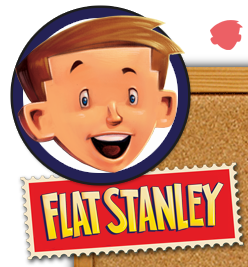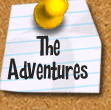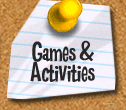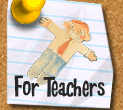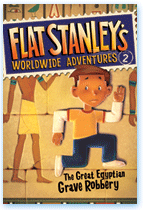
Travel with your students to Egypt and teach them about a culture very different from their own. The ideas provided below will help you design a great lesson plan from the ancient pharaoh’s tombs to modern day bazaars.
About the Book
Ever since Stanley was flattened by a bulletin board, he has been able to do things that no one else can. In this second book in Flat Stanley’s Worldwide Adventures, Stanley travels to Egypt by airmail, where he learns to decode hieroglyphics, visits a bazaar, and explores an ancient pharaoh’s tomb. Can Stanley confound the grave robbers he’s accidentally been working for and save the pyramid’s magnificent treasures?
Comprehension and Discussion Questions
- How does Arthur feel when he finds out that Stanley has been invited to Egypt? Why does he feel this way?
- What does Stanley observe about Egypt when he gets there? How is Egypt similar to and different from your home region?
- When does Stanley start to suspect that Sir Abu Hawara is a bad man? How does he confirm his suspicions?
- What Egyptian treasures are in the National Historical Museum and the great pyramid of Khufufull? How does Amisi feel about these treasures? Are there national treasures where you live? Where are they kept? How do you feel about them?
- What are hieroglyphs? How does Stanley use his knowledge of them to trick the grave robbers?
Extension Activities
- Destination: Egypt. Use Flat Stanley’s Egypt trip to inspire your students to plan their own Egyptian adventures. With your class, research intriguing Egyptian geographic and cultural sites. Then have student pairs imagine a one-week trip to Egypt and create an itinerary for what to do each day of the week.
- Signs of the Time. In Egypt, Stanley learns about hieroglyphs, the writing system of ancient Egyptians. After sharing some examples of hieroglyphs with your class, ask students to design some of their own. Have students select a familiar sign that they often see in their city or town and then re-create it using their own hieroglyphs. Possible signs that students could translate into original hieroglyphs include: children at play, emergency exit, lifeguard on duty, no smoking, playground entrance ,or quiet please.
- Pun and Games. In chapter one, Mrs. Lambchop accidentally makes puns about Stanley’s flatness: “travel is broadening” and “it rounds out one’s education.” Using these examples, teach your students about puns and then host a pun competition. Challenge groups of students to create as many puns relating to Flat Stanley as they can. After each group shares its puns, help the class vote for “The Funniest Pun,” “The Cleverest Pun,” and “The Pun Flat Stanley Would Like Best.”
- Unwrapping the Mummy. With your class, investigate Egypt’s mummies. Who did ancient Egyptians mummify and why? How did they make mummies? What did they do with them after the mummification process was complete? What has happened to the mummies since the time of ancient Egypt? Assign questions to student pairs, and then have them share the results of their research with the rest of the class.
For exclusive information on your favorite authors and artists, visit www.authortracker.com. To order, please contact your HarperCollins sales representative, call 1-800-C-HARPER, or fax your order to 1-800-822-4090.
Teaching guide prepared by Laura Williams McCaffrey, a library consultant and children’s book author, East Montpelier, Vermont.
